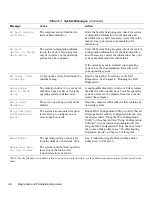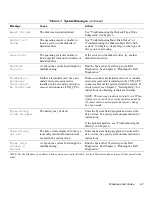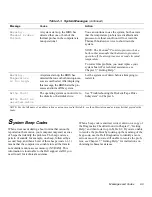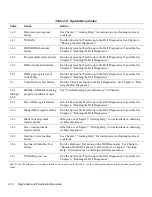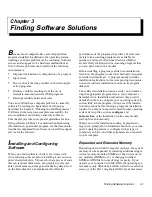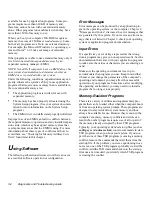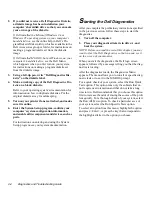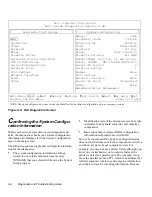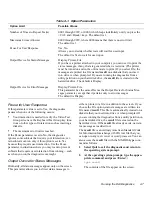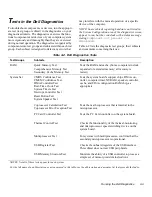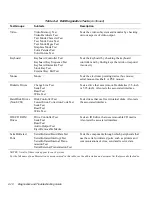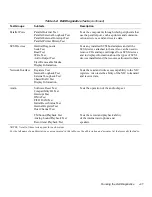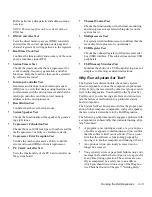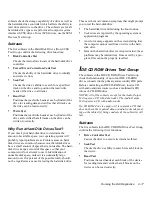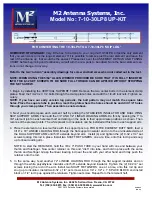
4-2
Diagnostics and Troubleshooting Guide
2.
If you did not receive a Dell Diagnostics Diskette,
a diskette image has been installed on your
computer’s hard-disk drive so that you can make
your own copy of the diskette.
If Dell installed the Microsoft Windows 3.x or
Windows 95 operating system on your computer’s
hard-disk drive, see the online help in Dell’s Pro-
gram Diskette Maker utility, which is available in the
Dell Accessories group or folder, for instructions on
making a program diskette set from the diskette
image.
If Dell installed MS-DOS, but not Windows, on your
computer’s hard-disk drive, see the Dell Menu,
which appears when you first turn on your system,
for instructions on making a program diskette set
from the diskette image.
3.
Using a felt-tip pen, write “Dell Diagnostics Dis-
kette” on the diskette label.
4.
Make a working copy of the Dell Diagnostics Dis-
kette on a blank diskette.
Refer to your operating system’s documentation for
information on how to duplicate diskettes. Put the
original diskette away for safekeeping.
5.
Turn on your printer if one is attached, and make
sure it is online.
6.
Enter the System Setup program, confirm your
computer’s system configuration information,
and enable all its components and devices, such as
ports.
For instructions on entering and using the System
Setup program, see your system documentation.
S
tarting the Dell Diagnostics
After you complete the preliminary instructions specified
in the previous section, follow these steps to start the
diagnostics:
1.
Turn off the computer.
2.
Place your diagnostics diskette in drive A, and
boot the system.
NOTE: Before you read the rest of this chapter, you may
want to start the Dell Diagnostics so that you can see it
on the screen of your monitor.
When you start the diagnostics, the Dell logo screen
appears, followed by a message telling you that the diag-
nostics is loading.
After the diagnostics loads, the Diagnostics Menu
appears. The menu allows you to run all or specific diag-
nostic tests or to exit to the MS-DOS prompt.
For a quick check of your system, select the Run Quick
Tests option. This option runs only the subtests that do
not require user interaction and that do not take a long
time to run. Dell recommends that you choose this option
first to increase the odds of tracing the source of the prob-
lem quickly. For a thorough check of your system, select
the Run All Tests option. To check a particular area of
your system, select the Run Specific Tests option.
To select an option from this menu, highlight the option
and press <Enter>, or press the key that corresponds to
the highlighted letter in the option you choose.
Содержание OptiPlex HUB
Страница 1: ... 1267 6 1 7528 6 227 1 8 ...
Страница 2: ......
Страница 3: ... 1267 6 1 7528 6 227 1 8 ...
Страница 10: ...x ...
Страница 18: ...xx DELL CONFIDENTIAL Preliminary 2 10 98 ...
Страница 20: ...xxii DELL CONFIDENTIAL Preliminary 2 10 98 ...
Страница 38: ...2 14 Diagnostics and Troubleshooting Guide ...
Страница 42: ...3 4 Diagnostics and Troubleshooting Guide ...
Страница 88: ...6 20 Diagnostics and Troubleshooting Guide ...

